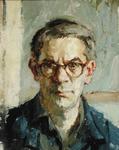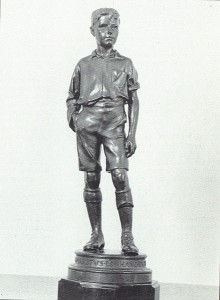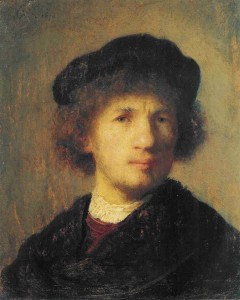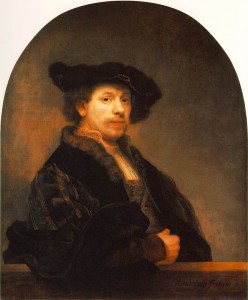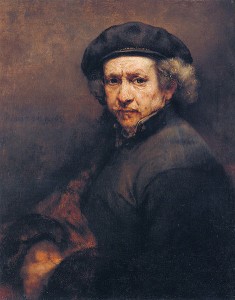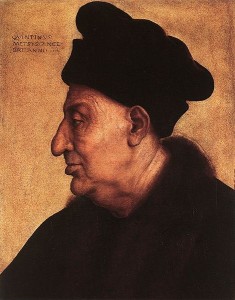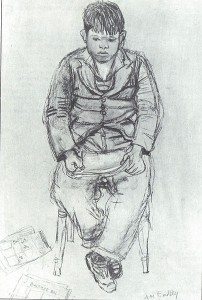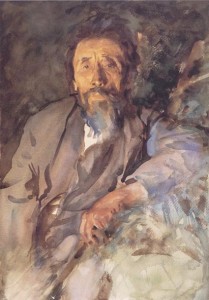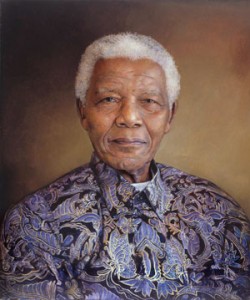Portrait drawing: how high is the collar?
October 20, 2012
Some thoughts on necklines in portrait drawing
Above: Picasso “Boy with a Pipe” 1905
The importance of positioning the collar correctly
In our draped model class last week, we looked closely at necklines. Where does the collar cross the back of the model’s neck? How high up does the collar sit? It is very important to judge this well when drawing a portrait, as the position of the collar changes the whole impression of the sitter. It can help to give the viewer an idea of the model’s age, personality and emotional state.
The height of the collar on the “average” person
A standard shirt collar on an “average” adult crosses the neck at about the same level as the centre of the mouth. I understand this from looking at many people in the street and on trains, etc. So the collar comes up rather higher than many people realise. It is a common “beginner’s error” to draw the collar too low, with the head seeming to perch precariously above it.
Above: Bernard Dunstan “Self Portrait”, showing a typical collar height
The top of a shirt collar of this type generally reaches the lower part of the back of the neck. Surprisingly, the neck tends to angle forward so much that this point is level, at the front, with the mouth.
The collar comes up lower on the neck in children
Children typically have a more upright neck posture than adults. A schoolchild’s collar therefore tends to cross the neck well below the mouth. Below is a figure designed to encapsulate the public school ideal of the early 1900s, showing the upright neck and low-sitting collar typical of a boy of this age:
Above: C.Pilkinton Jackson (1887-1973) “The Loretto Boy, 1909, bronze, 68.5cm
The collar comes up higher as the person gets older
As a general rule, the neck and the top part of the shoulders tend to angle forward more and more as a person gets older. Because of this, the collar reaches higher up the head with increasing age.
Below are a few self portraits by Rembrandt. Look at the point at which the collar crosses the back of the neck in each case. Is it level with the centre of the mouth, or is it higher or lower than this?
Above: Rembrandt “Self Portrait”, 1630, oil on copper, 15×12.2cm
Above: Rembrandt self portrait, 1640, oil on canvas, 102x80cm
Above:Rembrandt self portrait 1659, 84.5x66cm
Notice how, in the self portraits by Rembrandt, above, the collar reaches higher up the head as the sitter ages.
In the painting below, the posture of the sitter immediately tells us that he is old. The back of the collar reaches up even higher than the end of the nose:
Above: Quinten Massijs “Portrait of an Old Man” c.1517
If you are looking down on someone, their collar appears to reach higher up the back of their head
The apparent position of the collar is affected by the artist’s eye level. In the drawing below, we are looking down on the boy. Notice how high up the collar appears to reach. The top of the collar crosses his head at the level of his nose. (This boy is also slumping, which contributes to this effect):
Above: John Eardley Philip “The Fat Boy”, c1950, pastel and chalk on paper
When we look up at someone, we see more of their neck emerging from the top of their collar and the collar appears to cross the neck lower down. There is something of this effect happening in the photo of the bronze boy, “The Loretto Boy”. higher up this page.
Athletic people and dancers tend to have a more upright neck position
As a general rule, sports-people and dancers have a more upright neck posture and tend not to round the tops of their shoulders forward. Such well-coordinated people usually have good core muscle tone and supple hips and shoulders, so that they do not feel the need to slump their shoulders and neck.
As a result of this, dancers and athletes tend to have collars that sit lower on their neck, below the level of the mouth.
Some ballet dancers have a relatively long neck in addition to wonderfully upright posture and, taken together, these factors lead to their collar sitting very low on the neck.
For example, look at the shirt collar on the Cambodian ballet dancer, Sokvannara ‘Sy’ Sar in the photo below:

Above: Anne Bass and Sokvannara ‘Sy’ Sar, a photo portrait by Timothy Greenfield-Sanders
Slumped, sloping shoulders and neck suggest negative emotions
When people become weary, their shoulders and neck tend to slump or angle forward a little more. So the back of the collar reaches higher up when the sitter is tired. Watch out for this if you are drawing from life. You may choose to note the collar height of your sitter when they are still “fresh” early on in the sitting, and be aware that their neck may slump a little towards the end of the sitting, perhaps in a slightly unflattering way.
Shoulders and neck may also slump when someone is feeling negative in other ways. We talk about feeling “down”, and such negative feelings can go along with a downward slump of the neck and shoulders. This slump results in the back of the collar reaching higher up when the sitter is feeling depressed, dejected, sulky or generally miserable.
Take, for example, this tramp. He looks world-weary, largely due to his slumped posture and the low position of his head relative to the shoulders:
Above: J.S.Sargent “The Tramp” watercolour on paper, 50×33.5cm
Of course, your sitter may be perfectly cheerful but simply have “bad posture”. Watch out… it is easy for the viewer to make immediate assumptions about someone who has a slumped posture. The collapsed neck and shoulders with a high collar can be very unflattering, suggesting that your sitter is “old and miserly”, or “withdrawn and sulky”. A tailored shirt collar will make the posture even more obvious. In drawing such a person, you may opt to have them looking up and sideways at something interesting, or to draw them from a low viewpoint. These are two suggestions that may help to disguise the unflattering collapsed neck posture.
Upright neck and low collar suggest positive emotions
We sometimes refer to trustworthy, reliable people as “upright characters”. A person with an upright neck posture and thus a low shirt collar position appears to be such a person.
An upright neck also suggests that the sitter is alert and interested.
My first example is a 2008 painting of Nelson Mandela. Notice the low position of his shirt collar relative to his head. He has a wonderful appearance of alertness and control in this image:
Above: Richard Stone “Portrait of Nelson Mandela” 2008, 20x24in
Another example is this drawing of a lady wearing a low-cut neckline and viewed from a low vantage point to accentuate her long, upright neck. Sargent has emphasised her elegant neck posture to give an impression of physical grace, mental alertness and charm:
Above: Portrait drawing of Mrs George Swinton by J.S.Sargent
In summary
Take note of your portrait sitter’s head and neck posture. This posture suggests information to the viewer regarding age, character and mood. Do pay close attention to the level at which the collar crosses the back of the sitter’s neck.

